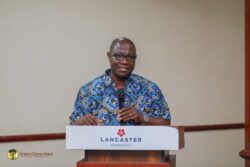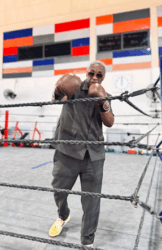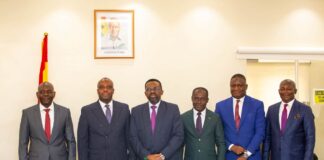…plans must communicate goals and milestones on the journey
Same as informal coaching, the prime objective of formal coaching is always about upskilling junior colleagues. Most often than not, special programmes are deliberately and consciously designed for the definite and specific needs and future goals of trainees and also the institution with the aim of developing and preparing the bench strength to create a leadership pool.
To this end, executives are central to this discussion. This is because, executives must willingly show empathy to genuinely support employee growth. Trainees must also show readiness. To be ready in leadership is about willingness and capacity. There are some individuals who aspire to leadership positions with a lot of zeal and will but without capacity and there are others with capacity but unwilling to lead in some institutions. Good coaches must establish this balance before take-off in any formal coaching process.
Formal coaching dynamics have common features and undercurrents. There must be a one-on-one relationship established between trainee and the coach which should run through at least three through six to twelve months –and sometimes beyond a year depending on the established plan.
The process starts with performance assessment with the trainee to clarify development needs to launch the SGA- Skills Gap Analysis- process.
The coach and the trainee would have to agree on meeting times as discussed within the broader corporate schedule. Monthly meetings aimed at recapping events and building new skills will always set the right tone for new discussions. Coaches are encouraged to adopt role plays, videos and real life experiences to provide immediate feedback.
Good institutions with the right reputation for formal coaching invest in every coaching process. Well-structured coaching programmes depending on the size of the institution run into at least $100,000. 21st century institutions that understand coaching don’t see every spending in the area of coaching as expense. Coaching is an investment not a cost to any institution.
Coaching is effective at building good attitudes and changing behaviours. JC Maxwell (2013) will always reiterate that, although good attitude may not guarantee success, bad attitude will surely guarantee failure. Coaching, by way of building teams, tend to have multi-million Cedi budgets and thousands of trainees.
During the skills gap analysis process coaches must identify trainee career objectives. A good coach must ensure that discussions elicit trainee’s strengths and development needs related to growth in line with career objectives. Not to belabour the point, coaches must be forthright and blunt when it comes to discussions on trainee’s performance. Coaches should check occasionally on how people perceive their trainees. Organizations and the expectation of the coach must be clear.
A coach must be forward-looking and also the leader in the conversation. In effect, plans must communicate goals and milestones on the journey. These discussions must be clearly spelt out in black and white. Locke and Latham (2004), said emphatically that goals are the most powerful elements of task behaviours. In the next episode we will look at the use of the golden tools of goal setting and the GAPS analysis in Formal Coaching.
This is Leadership!










